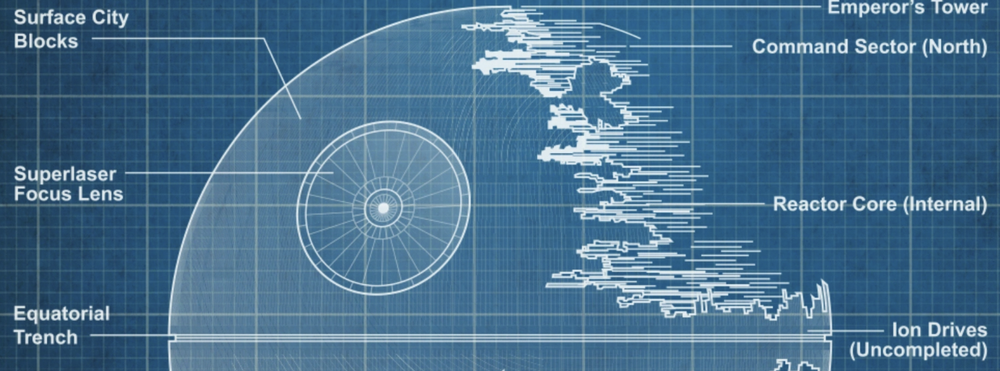Liability for the Second Death Star
Legal commentary on the Second Death Star Project
In Did the General Contractor on the Death Star Project Have to Build the Second Death Star for Free, attorneys Michael Hogue and Katharine Malone look at contract law as it might result in the contractor spending $825 quadrillion to perform to contract.
It’s a fun and fascinating read, and my primary quibble is that Galen Erso’s claim in Rogue One that the defects are subtle and hard to find is nonsense.
The design defects are palpable, and even a cursory review by the buyer should have noticed a lack of blow-out panels or baffles around the reactor in general, or screens or other barriers in the ventilation shafts. The Empire accepted the work, performed accelerated acceptance testing and flew the station into battle.
I’m not going to assert it was clearly reckless only because that’s a specific legal standard. Also, it’s unclear if Erso was working for the Empire or the defense contractor at various crucial moments.
Now, hindsight is 20/20, and so perhaps those defects aren’t as visible as I claim? The experts working for the Empire would like you to think so, and I find their lack of analysis...disturbing. The uncontested fact is that the Rebel team was able to perform the analysis and prepare a plan while the first Death Star was in hyperspace, pursuing the Falcon. The record shows no analysis of the delivered product by Imperial Engineering; in fact, officers as senior as Grand Moff Tarkin chose to be aboard while test firing a planet destroying laser for the first time.
As an engineer, the design evidence is easily analyzed. The Death Star needed better answers to the question of what can go wrong. The Death Star Architect can complain all he wants about not being told about space wizards. Those complaints don’t change the fact that his methodology was overly-focused on attackers and their capabilities. (I’ve written extensively about that on this blog and elsewhere.) Also, can we just for a minute address the shocking religious intolerance here? Referring to members of an ancient and respected religion who were subjected to a genocide as “space wizards” is really beneath the architect, especially when he’s on stage.
The question of resisting subtle design flaws is a fascinating one, but we shouldn't allow ourselves to be distracted from good engineering practice.
If you enjoyed this, you might want to check out my new book, Threats: What Every Engineer Should Learn from Star Wars, available for pre-order wherever fine books are sold, and publishing February 7, 2023.
Credit: Death Star II plans via Wookiepedia.